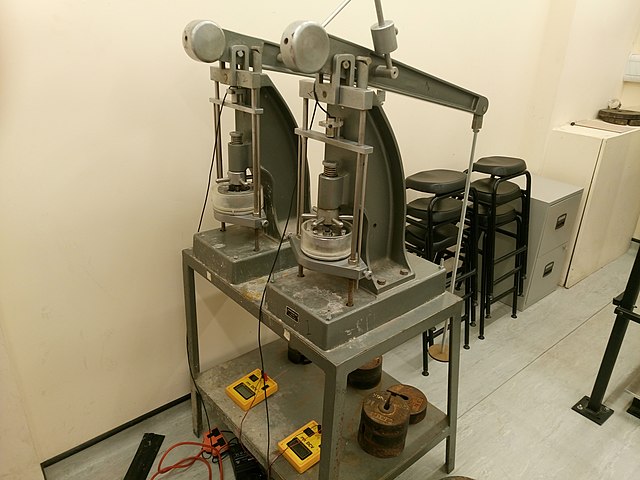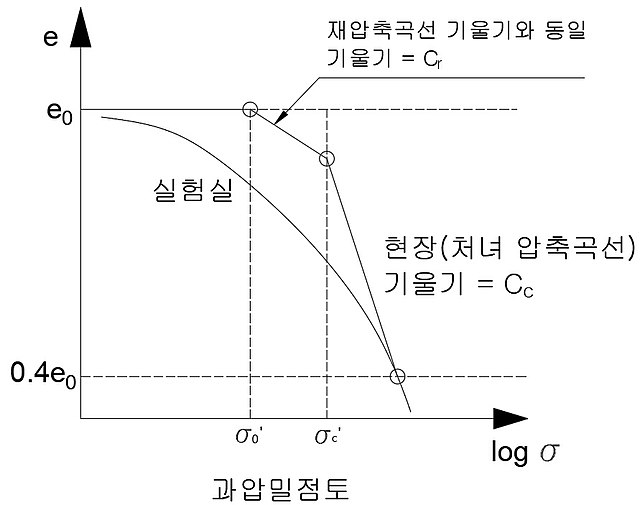In geotechnical engineering, soil compaction is the process in which stress applied to a soil causes densification as air is displaced from the pores between the soil grains. When stress is applied that causes densification due to water being displaced from between the soil grains, then consolidation, not compaction, has occurred. Normally, compaction is the result of heavy machinery compressing the soil, but it can also occur due to the passage of, for example, animal feet.
A 10 tonne excavator is here equipped with a narrow sheepsfoot roller to compact the fill over newly placed sewer pipe, forming a stable support for a new road surface.
A compactor/roller fitted with a sheepsfoot drum, operated by U.S. Navy Seabees
Vibrating roller with plain drum as used for compacting asphalt and granular soils
Vibratory rammer in action
Soil consolidation refers to the mechanical process by which soil changes volume gradually in response to a change in pressure. This happens because soil is a three-phase material, comprising soil grains and pore fluid, usually groundwater. When soil saturated with water is subjected to an increase in pressure, the high volumetric stiffness of water compared to the soil matrix means that the water initially absorbs all the change in pressure without changing volume, creating excess pore water pressure. As water diffuses away from regions of high pressure due to seepage, the soil matrix gradually takes up the pressure change and shrinks in volume. The theoretical framework of consolidation is therefore closely related to the concept of effective stress, and hydraulic conductivity. The early theoretical modern models were proposed one century ago, according to two different approaches, by Karl Terzaghi and Paul Fillunger. The Terzaghi’s model is currently the most utilized in engineering practice and is based on the diffusion equation.

Two oedometers at the University of Cambridge
Schematic diagram of spring analogy
Image: 과압밀점토 e log p







